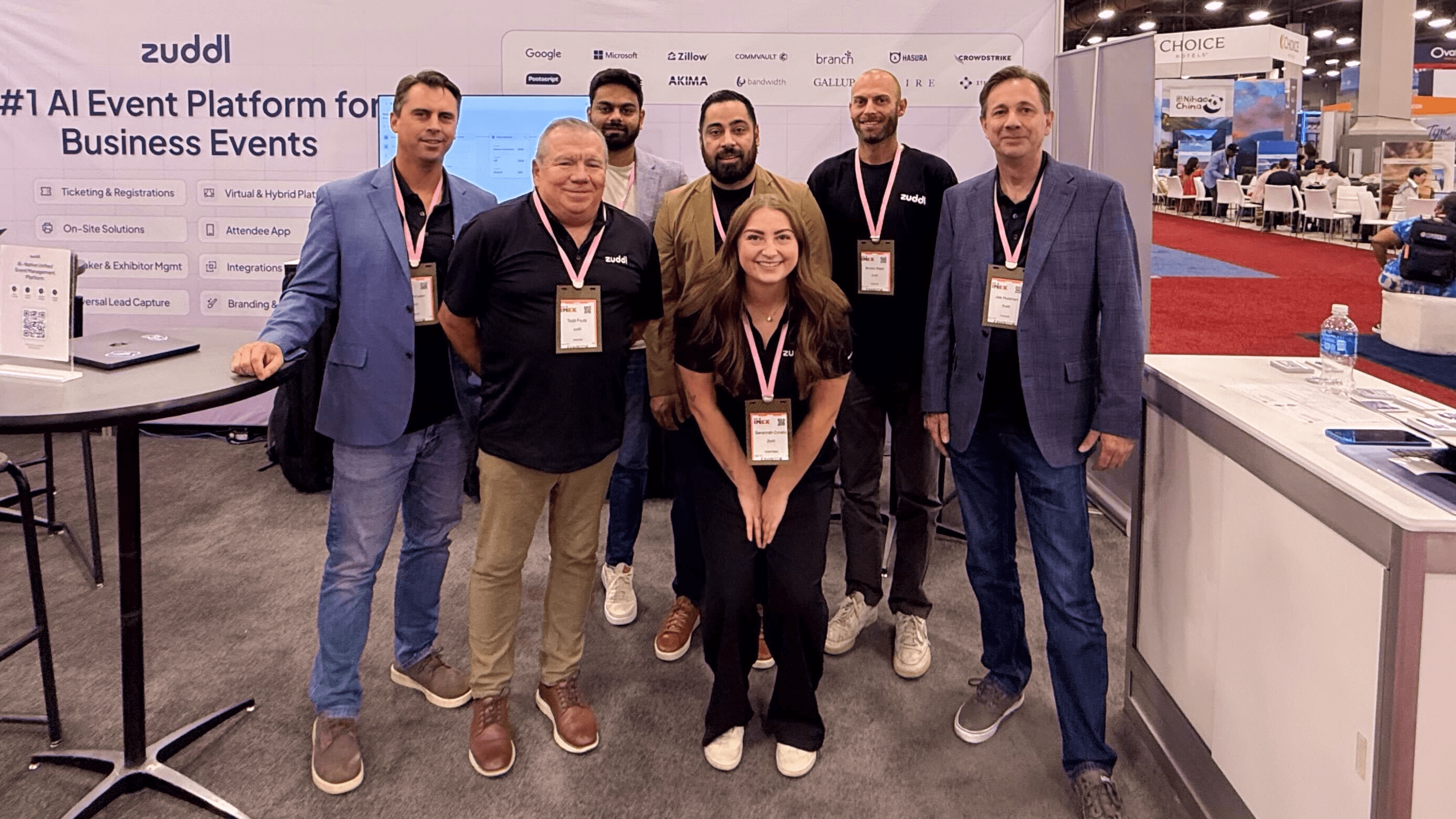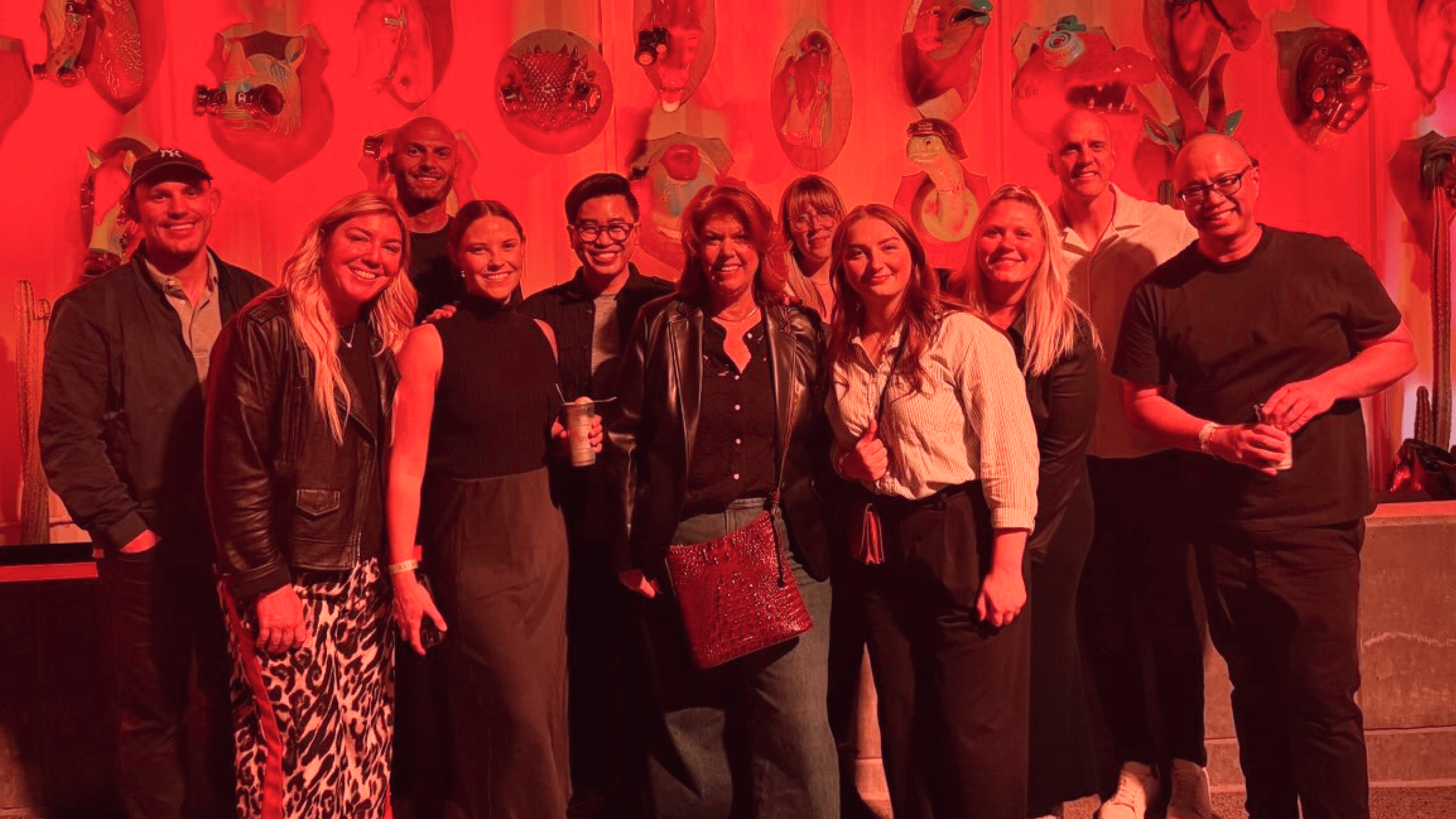Field Events
Tactics and tips to ace your next field marketing event.

Zuddl’s Q4’25 Events Roundup: From Vegas to London
From Vegas to London—see what industry events we're headed to in Q4'25. Come say hi and see Zuddl in action.
From Vegas to London, our Q4 events roster is shaping up to be our most exciting yet.
Team Zuddl is hitting the road this quarter, meeting event and marketing leaders across major global events.
This quick post highlights where we’ve already been and where you’ll see us next.
Zuddl at IMEX America 2025 and Money20/20 USA
We kicked off Q4 with a bang at IMEX America 2025 and Money20/20 USA.
We unveiled our latest innovation: Zuddl’s AI Agents—on-demand copilots for event marketing that automate workflows, personalize experiences, and uncover real-time insights.
The response was incredible. Events and ops teams were intrigued by how seamlessly our AI Agents can plan, personalize, and power event experiences, setting the stage for a smarter future.


Here’s where you’ll find us next 👇
November highlights
Event Tech Live | Nov 11–12 | London
We’re headed to Event Tech Live 2025 at ExCel London to show you how we’re building a truly unified business events platform for modern marketing teams.
Book time with us in advance using this link.
December highlights
AWS re:Invent | Dec 1 | Las Vegas
We’ll be on the show floor, meeting enterprise event professionals. Stop by if you’re curious how AI Agents can simplify your next large-scale event.
Marketing Ops Dinner | Dec 9 | Austin, TX
Finally, we’ll be rounding off the year with a co-hosted dinner with the Marketing Ops community. You can expect great food, even better conversations, and a toast to the year ahead.
See you on the road
Whether it’s launching AI innovations, connecting over great food and drinks, or meeting you on the show floor, we can’t wait to show you how Zuddl helps event teams work smarter, not harder.
To stay updated about our presence at leading industry events and exclusive Zuddl virtual events, follow (and bookmark) this link.

Field event secrets revealed: the sacred pre-game huddle
Master the art of the pre-game huddle to align your team, clarify roles, and execute a flawless field marketing event strategy.
So you're looking forward to hosting your field marketing event, and you have all your pieces in place.
What next?
There’s just one more important activity to do before the live date: a plan-of-action meeting with your sales colleagues who’ll be at the event. This is the time to align on expectations, roles, and responsibilities and put together a coordinated effort to maximize impact at the event.
How early should you schedule preparation and sync meetings?
Sync meetings should be scheduled more frequently as the field marketing event approaches and should align with the need for up-to-date information and coordination.
Early planning phase
Monthly sync meetings can be adequate for initial planning, brainstorming, and laying out the groundwork.
Mid-planning phase
Fortnightly sync meetings are beneficial during the mid-planning phase, as tasks and details start to take shape, and it's important to maintain a steady pace.
Final preparations
Days to weeks before the event, daily or even more frequent sync meetings may be necessary during the final preparations, as there's an urgency to ensure that everything is on track and make any last-minute adjustments.
You need to hold a final meeting at least 3 business days before the event


Fore more such field marketing event tactics, head to our awesome (if we may say so, ourselves!) Field Marketing Guide!

Field marketing experts reveal exclusive budgeting hacks!
Get insider tips and strategies for making every dollar count in your field marketing efforts.
Yes, we know it's common practice to establish goals before anything else, but in this scenario, examining your financial resources upfront should come first.
Understanding how much money you have to work with lets you draw out the playing field, helps you to identify the scope and ambition of your efforts and prevents a ‘goals gone wild’ scenario. It’s an approach that Ashley Mauras, Director of Experience Marketing at Quantum Metric, highly recommends.

Ashley Mauras, Director of Experience Marketing, Quantum Metric
Why you should set a budget before setting field marketing goals
Even before you set your goals, look at your budget. It will give you clarity on both your limitations + opportunities, such as the number of events you can plan, the level of investment you can make in each event, and your target number of attendees.
For example, you could do a happy hour for 30 people and spend $3K, or you could book a luxury suite at a sporting event for $15K with limited tickets, which may lead you to target an executive-level audience to give you the best chance at ROI. Your budget will help you understand what’s feasible right away.
When calculating the impact of your events on the pipeline, it can help to weigh its efficiency against other channels, explains Ben Winn, Director of Community at FirstMark in this LinkedIn article.

Ben Winn, Director of Community at FirstMark
How to calculate the impact of field marketing events on pipeline
Put simply, all you need to know is how efficient your field marketing spend is, and how its efficiency compares to your other customer acquisition channels. For every dollar you spend on it, how many dollars are you getting back?
If you have no idea what your field marketing spend efficiency is, you should start there BEFORE establishing a budget for it.
Now, this will give you a high-level budget to work with, but there’s a lot more to factor into your planning and budgeting, which we’ll unpack in the following sections.
Get a ready budgeting template for your field events - head to our field marketing guide.

Rethinking B2B field marketing: 5 insights for the modern event marketer
Discover 5 expert-recommended ways to ensure your field marketing events are driving maximum impact.
How do you build field marketing events that truly stand out from the rest?
That's exactly what we asked three event marketing experts - Nick Bennett, CCO & Co-Founder at TACK, Rebecca Martins, Revenue Marketing Leader at Jellyfish, and Arthur Castillo, Head of Dark Social & Evangelism at Chili Piper, in our recent edition of Events About Events.
Today, we're excited to share five sharp insights from their conversation, offering a glimpse into the future of field marketing events in 2024
1. Embrace differentiation

In a landscape brimming with similar messages, standing out becomes more crucial than ever. This means thinking beyond the standard pre-event meeting requests.
A more effective strategy involves creating offsite activations. These events offer a refreshing alternative to the usual field marketing event experience, providing an opportunity for attendees to engage in a more relaxed and enjoyable setting. This approach not only differentiates a company from its competitors but also fosters a more personal connection with potential customers.
Arthur suggests that hosting an event with intriguing acts, keynotes, or activities relevant to the attendees' interests can create a more inviting atmosphere by shifting the focus from a direct sales pitch to a valuable and enjoyable experience, which can leave a lasting impression.
Additionally, incorporating unique and fun elements at the booth itself, like offering branded items that start conversations (In Arthur's case with Chili Piper - custom hot sauce :)), can draw people in and spark interest in a more organic way.
2. Sales alignment - a strategic imperative

Aligning with sales teams for field marketing events is essential for several key reasons.
Firstly, it leverages the unique insights and creative mindsets of sales representatives, who often have a deep understanding of customer needs and preferences. Their involvement in marketing initiatives can bring a fresh perspective that enhances the effectiveness of these events.
Secondly, field marketing events like dinners provide an ideal platform for facilitating direct interactions between a company's best customers and their most promising prospects. This setup creates an environment conducive to organic and meaningful conversations, which can significantly influence decision-making processes.
Thirdly, these events can play a pivotal role in advancing deals that are stuck in the pipeline. By providing an informal yet focused setting for discussions, field marketing events can help overcome barriers that might be difficult to address in more formal business contexts.
3. Measuring success - a deeper dive

The importance of quality over quantity in lead generation at field marketing events is a key takeaway.
Relying solely on badge scans at events for lead generation can be ineffective, as it often provides little context or qualification information about the prospects. This approach can result in sales teams receiving a list of contacts without any insight into their relevance or potential interest, making follow-up efforts less efficient and potentially unproductive.
A more effective strategy involves engaging in meaningful conversations with attendees to understand their specific needs and interests. This approach ensures that any follow-up is tailored and relevant, increasing the likelihood of successful engagement. It's crucial to understand the role and challenges of the person you're speaking with, whether they're a marketer, VP of Sales, or Head of Customer Success, to make the interaction as relevant and impactful as possible.
Focusing on booked demos rather than badge scans is a more targeted and meaningful metric for measuring success at trade shows and other events.
4. Creativity over budget
Effective event planning and marketing don't necessarily require a large budget; creativity and resourcefulness can often lead to significant impact. Utilizing available resources can be a cost-effective starting point. Rebecca shares an instance where resourceful and creativity outweighed the budget factor: "I remember my super scrappy days - we just happened to have this like event space in our office building and I think I had like $1,000 dollars to do something in Boston that quarter and I just like scrappily got some drizzly drinks delivered hired a bartender just had some cool music playing and I think I got Whole Foods delivered as well was like under a thousand bucks - we had 50 people there and it was great."
5. The power of collective brainstorming

Collaborative brainstorming sessions are a powerful tool for generating innovative ideas, as they bring together diverse perspectives and experiences. These sessions, which Nick refers to as "Inspo Sessions", involve members from various teams, not just those directly related to the project at hand. This inclusivity is key, as individuals from different backgrounds can offer fresh insights and approaches that might not be considered in a more homogenous group.
Typically, these brainstorming sessions might start slowly, but as ideas begin to flow and participants become more engaged, the quality and creativity of the suggestions improve significantly. Through his years of carrying out such activities, Nick points out that the most productive part of the session occurs after an initial period of warming up, around 35 to 40 minutes in. The outcome of such sessions can be surprisingly effective, with teams frequently finding themselves impressed by the innovative and diverse ideas generated.
Field marketing in the B2B world is evolving, and staying ahead requires a blend of creativity, strategic alignment with sales, thoughtful measurement of success, budget savvy, and collaborative planning. By integrating these insights into your strategy, your field marketing efforts can move beyond the conventional, creating memorable experiences that resonate with your audience and drive tangible business results.

No Results found. Please try another search.
If you still haven’t found what you’re looking for, then please use the topics on top to browse through all content.
Subscribe to our blog now!
